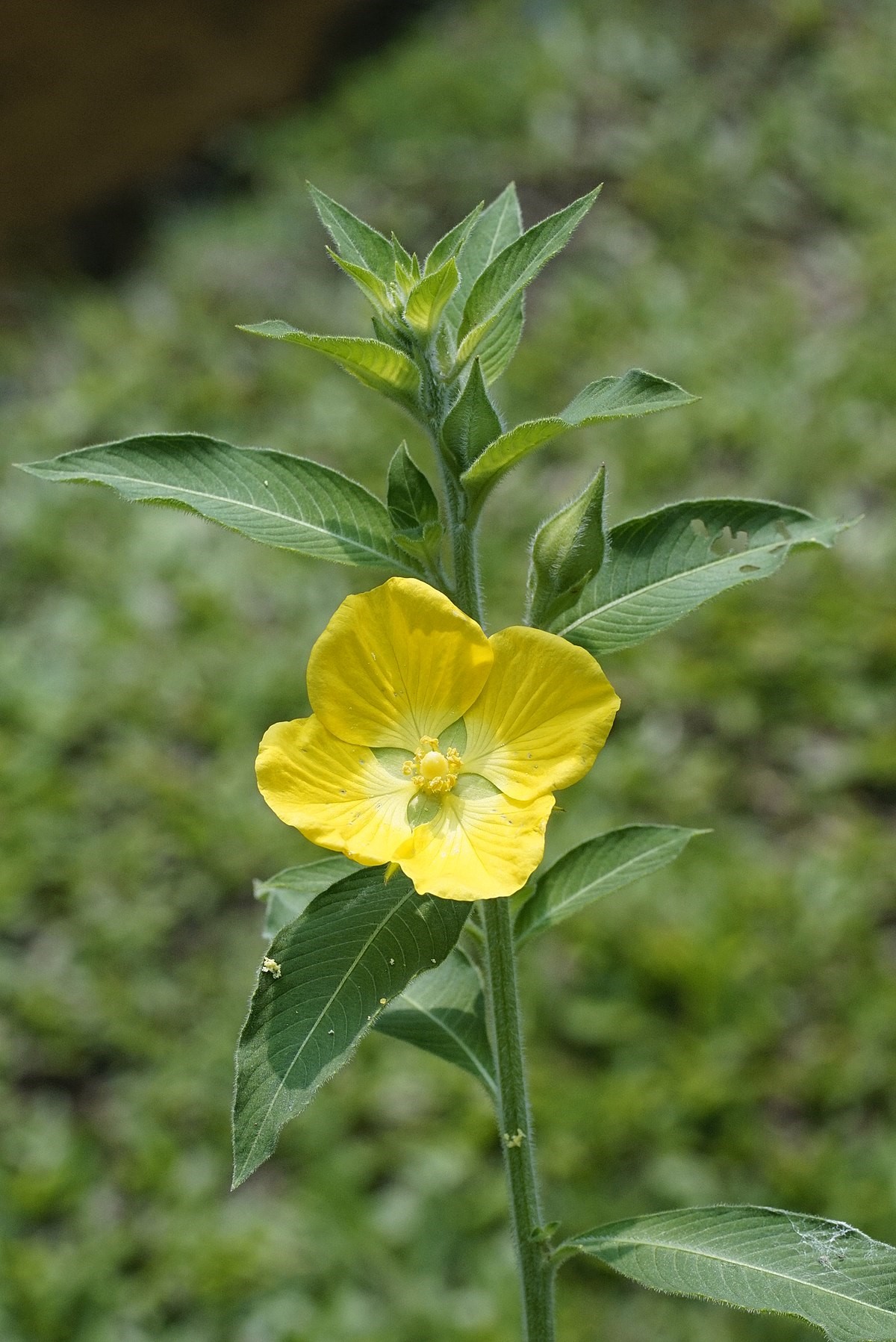Description

Disclaimer: Copyright infringement not intended.
Context
- Ludwigia peruviana is an invasive aquatic weed originally native to Central and South America, including Peru.
- It has become a serious threat to elephant habitats in Valparai, a hill station in Tamil Nadu, located near the Kerala border.
Details
Rapid Spread and Impact
- Ludwigia peruviana grows rapidly along water bodies, particularly in the swamps, locally known as vayals, of Valparai.
- These swamps were once lush with grass and native plants, providing vital foraging areas for elephants, even during dry months.
- However, the rapid spread of Ludwigia has disrupted this balance, limiting the growth of edible grasses and plants, affecting the food supply for elephants and other herbivores like gaur.
Human-Elephant Conflict Risk
- As the invasive weed displaces the natural forage in elephant habitats, there is an increased risk of human-elephant conflicts.
- Elephants may venture closer to human settlements in search of alternative food sources, leading to potential confrontations and safety concerns for both humans and elephants.
Impact on Elephant Habitats in Annamalai Tiger Reserve
- Valparai is situated within the larger Annamalai Tiger Reserve, a critical area for the conservation of elephants that traverse between Tamil Nadu and Kerala.
- The invasion of Ludwigia in Valparai's swamps has disrupted the ecological balance and traditional movement patterns of elephants within the reserve.
- Elephant habitats are essential for the sustenance of the pachyderms and contribute to maintaining the overall biodiversity of the region.
Conservation Efforts and Challenges
- The spread of Ludwigia in Valparai's swamps has raised conservation concerns, prompting efforts to tackle this invasive species.
- Conservationists are calling for a mapping and grading process to assess the severity of Ludwigia invasion, enabling targeted management strategies.
- The removal of Ludwigia presents unique challenges as it predominantly grows in swamps, limiting the use of machinery for eradication without causing further environmental damage.
Role of Private Estates and Government Agencies
- Most of the swamps infested by Ludwigia are situated on private estates, making their active involvement in conservation efforts crucial.
- Under the Tamil Nadu Preservation of Private Forests Act, private estates have a responsibility to engage in conservation activities.
- Government agencies, such as the Forest Department, are collaborating with private estates to address the issue collectively.

Valparai: A Hill Station in Tamil Nadu
Location and Geography
- Valparai is a hill station located in the Coimbatore district of Tamil Nadu, India.
- Situated at an elevation of about 3,500 feet (1,100 meters) above sea level, Valparai is nestled amidst the Western Ghats, a UNESCO World Heritage Site known for its rich biodiversity.
Scenic Beauty and Climate
- Valparai is renowned for its picturesque landscapes, lush tea estates, rolling hills, and dense forests.
- The region experiences a moderate and pleasant climate throughout the year.
Tea Plantations and Biodiversity
- Valparai is known for its extensive tea plantations that cover vast areas of the hill station.
- Apart from tea cultivation, the region boasts diverse flora and fauna due to its location within the Western Ghats biodiversity hotspot.
Wildlife and Conservation
- Valparai is home to various wildlife species, including elephants, gaur, leopards, macaques, and numerous bird species.
- The presence of elephants in the region has led to human-wildlife conflicts, making wildlife conservation efforts crucial.
Annamalai Tiger Reserve
Location and Extent
- The Annamalai Tiger Reserve is situated in the Western Ghats of Tamil Nadu and spans across the Coimbatore and Tiruppur districts.
- It covers an extensive area of about 1,459 square kilometers, making it one of the largest protected areas in the region.
Wildlife Conservation
- The reserve was established primarily to protect the endangered Bengal tiger and its habitat.
- Apart from tigers, the Annamalai Tiger Reserve supports a diverse range of flora and fauna, making it a crucial biodiversity hotspot.
Unique Ecosystems
- The reserve encompasses various ecosystems, including evergreen forests, montane grasslands, shola forests, and swamps, providing a rich and diverse habitat for wildlife.
.jpg)
Conclusion
The invasion of Ludwigia peruviana in Valparai's swamps poses a significant threat to elephant habitats and their natural foraging areas. Swift conservation actions, cooperation between private estates and government agencies, and the active involvement of conservationists are essential to mitigate the impact of this invasive species and ensure the coexistence of humans and elephants in the region. The preservation of these vital habitats is vital for safeguarding the rich biodiversity of Valparai and the ecological balance of the Annamalai Tiger Reserve.
|
PRACTICE QUESTION
Q. Which of the following statements is true about Ludwigia peruviana?
a) It is a terrestrial orchid species found in the Western Himalayan region.
b) It is an aquatic weed native to Central and South America.
c) It is an endangered seahorse species found in Sydney's harbor.
d) It is a carnivorous plant species documented in the Western Himalayas.
Correct answer: b)
|
https://www.thehindu.com/sci-tech/energy-and-environment/peruvian-weed-threatens-elephant-habitats-in-tamil-nadu/article67109844.ece














